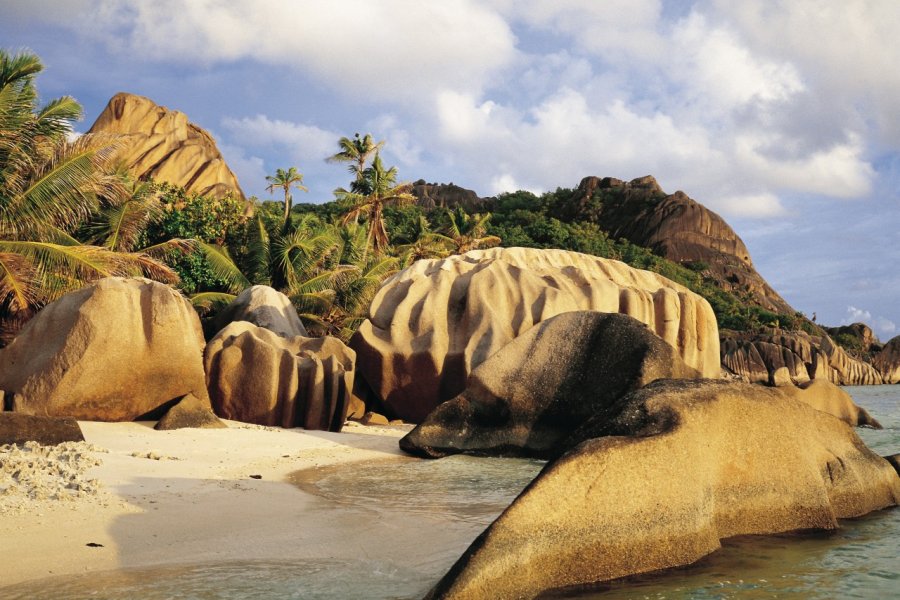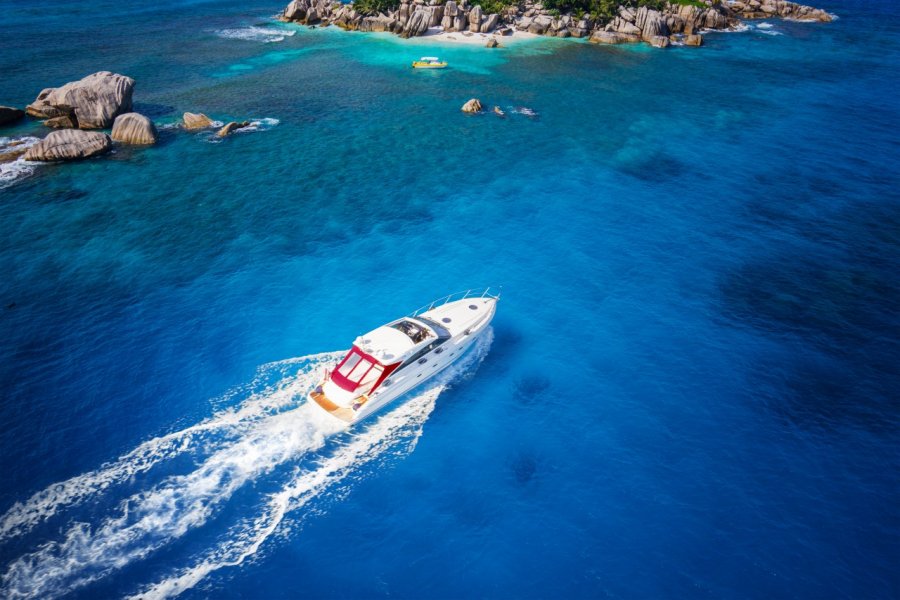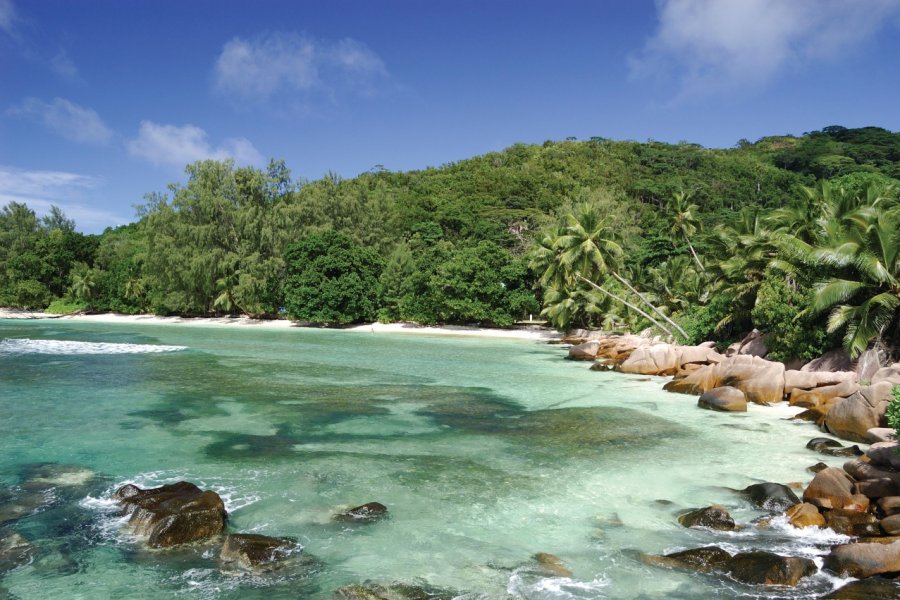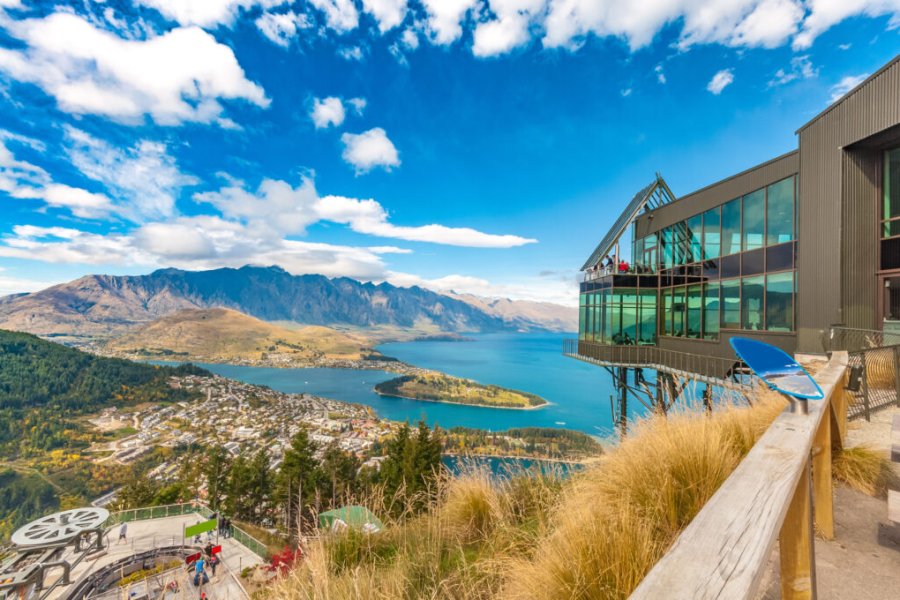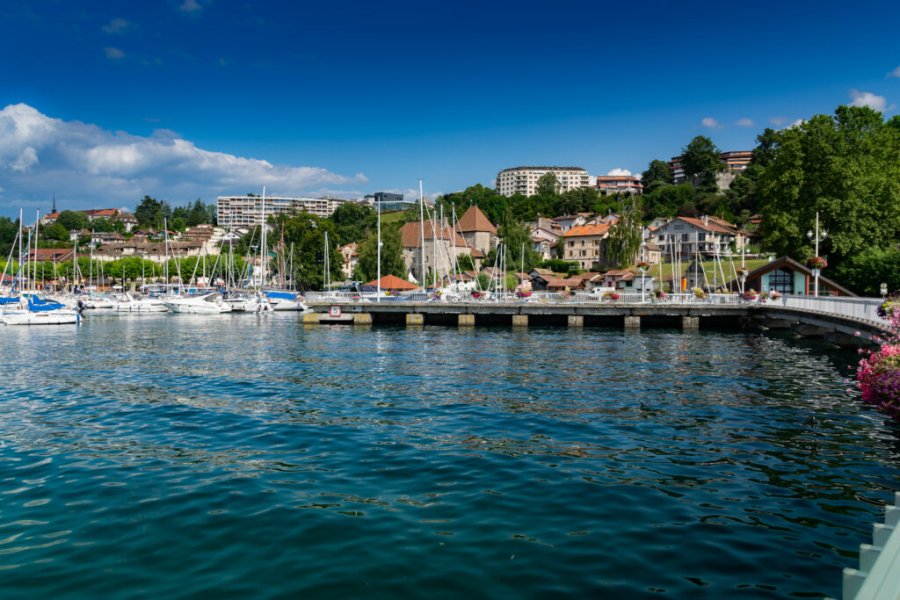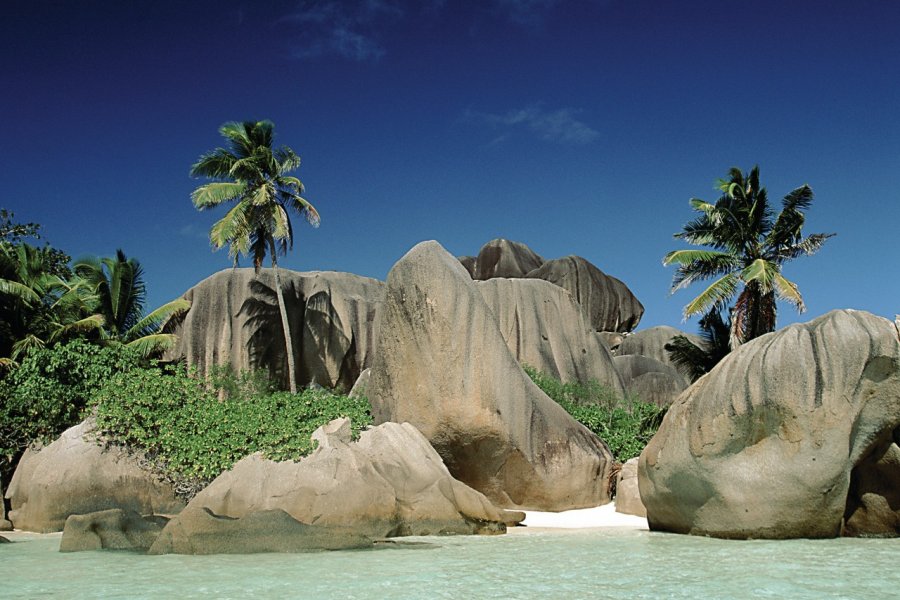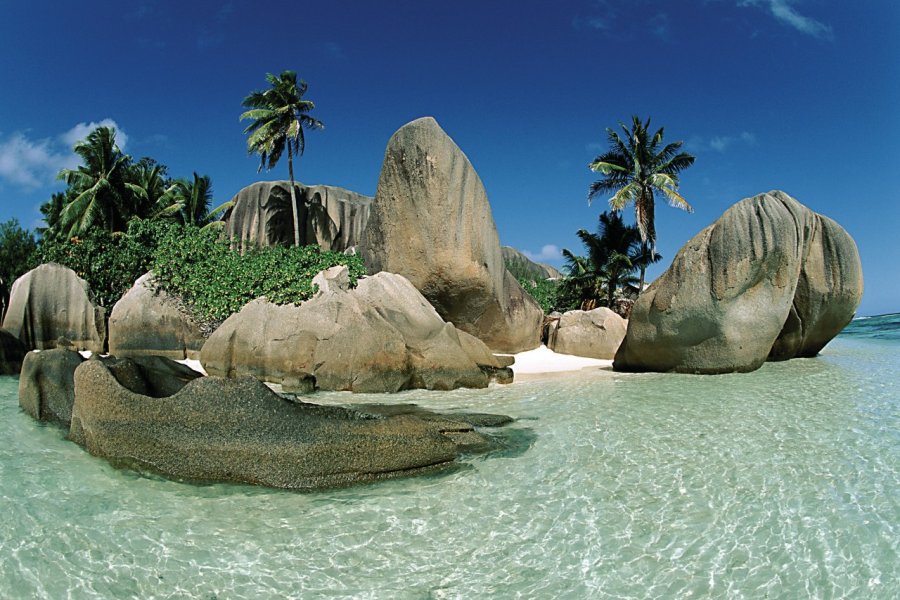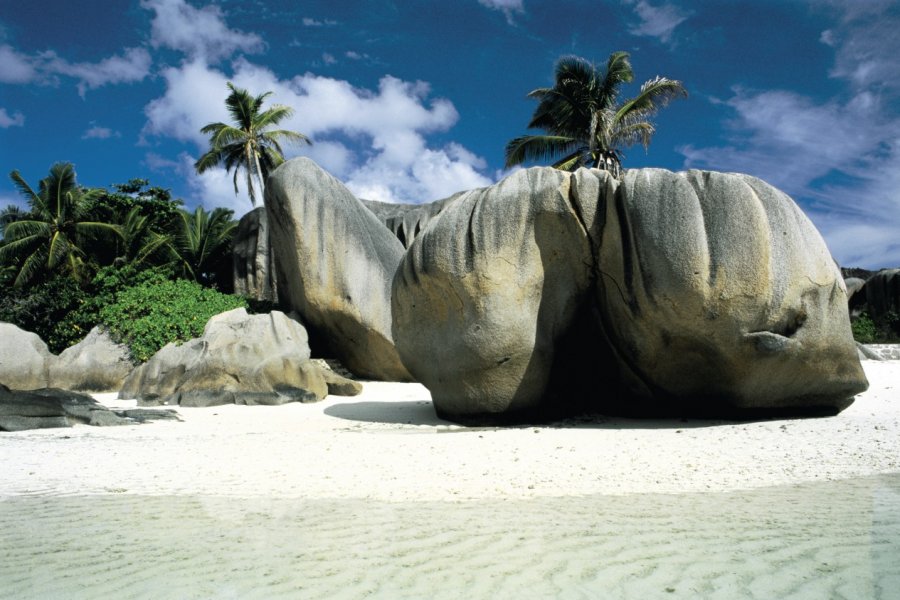Travel Guide La Digue
In the Indian Ocean, it is one of the islands of the Seychelles archipelago, the fourth in size and the third in population. Located 45 km off Mahé (15 minutes by boat), La Digue is known for the beauty of its beaches, including those with the evocative names of Anse Source d'Argent, Anse Bonnet Carré and Anse Cocos. The most famous, Anse Source d'Argent, offers a unique landscape of fine sand dotted with granite blocks rounded by erosion. This charming island is home to a rich biodiversity, especially in the nature reserve of the Black Widow. One can observe, in particular, giant turtles. The economy of La Digue is essentially based on tourism. This island of paradise spread over 5 km long and 3 km wide alternates beach and hills covered with coconut trees, lataniers and takamakas, criss-crossed with small picturesque roads. The island is lined with luxury hotels and charming guest houses, some of them in old colonial houses. Here, turquoise water and fine sand seduce the amateurs of dream destination. Big game fishing and horseback riding are also available. We visit on horseback the Union Estate, a former plantation on the west coast of the island, which houses, in addition to the beach of Anse Source d'Argent, a Breton cemetery, a planter's house in the heart of lush vegetation, a vanilla plantation and a copra oil factory.
What to visit La Digue?
Suggested addresses La Digue
When to go to La Digue?
The best periods to stay in La Digue are the months between the dry and wet seasons, i.e. April and, especially, October. Light wind, fleeting showers, calm ocean, ideal heat: the beautiful weeks are here! Whatever the date chosen, the heat is never overwhelming (25 to 32°C during the day, at least 24°C at night). The humidity level is always bearable (about 80%). Maximum rainfall is generally observed between mid-December and mid-January. The high tourist season generally corresponds to the European vacation periods, i.e. July and August, Christmas, February and Easter. You have then all the tourist offer available (restaurants, diving clubs, souvenir stores...). However, you can go all year round in the Seychelles and in La Digue which does not really have an off-season. You should also know that from November to April, the sea is ideal for diving and sailing. The climate is warm and humid, the wind is light and the sea is calm. And if you come in March, you will attend the International Carnival of Mahé and its parade of floats representing the different participating countries. And in October it is the Kreol festival, very colorful in the three islands of the archipelago.
Weather at the moment
The climate of the island of La Digue is equatorial, with pleasant temperatures all year round, varying little between 26 °C in August and 31 °C in April. From October to March, it is hot (30-32°C) and humid, and the sea is generally calm. From May to September, the atmosphere is cooler (24-29 °C) and drier, and the sea is rougher. October and April are the most pleasant months. On La Digue, the sky is often overcast in July and August, the wind shakes the ocean and showers are scattered.
The local currency is the Seychelles Rupee. Mastercard/Access and Visa credit cards are widely accepted. Given the price of a plane ticket (from 750 € to 1 300 € in economy class) and the duration of the flight (10 hours), it is preferable to stay two weeks in La Digue. The Seychelles is not a cheap destination. Count on a minimum of 100 € per day for your stay.
To stay in the Seychelles archipelago, especially on the island of La Digue, you must have a passport valid for at least another six months, a confirmation of the reservation for the accommodation, at least for the first three nights, with a contact, a return air ticket, and a sufficient budget for your stay (approximately 135 € per day).
Good news: a tropical country without health problems! Health conditions are good in the Seychelles, especially on the preserved island of La Digue, no malaria, no diseases specific to the tropics. No vaccinations are necessary, but standard vaccines are recommended as elsewhere. There is no specialized hospital infrastructure on Mahé, so it is better to plan a medical repatriation solution in case of serious medical problems.
Practical information
- When to travel?
- Weather forecast
- Budget
- Formalities
- Health
- How to travel by yourself?
- How to get organized?
- Getting around
Media
How to go to La Digue? Our advice & tips
Many agencies offer trips to the Seychelles, which often combine the three granite islands (Mahé, Praslin, La Digue) and a Koranic island, in 10 to 12 days. It is possible to discover La Digue and its islands by coastal cruises organized for small groups on board comfortable sailing boats or catamarans. The trips are generally oriented towards the beach, nature, diving, fishing and hiking.
Discover our selection of travel agencies for this destinationVisitors usually approach the Seychelles via Mahé and Victoria airport. No need to worry about landing alone. Moreover, French is quite frequently understood so you can easily organize yourself on the spot. You can reach the island of La Digue by shuttle, in a quarter of an hour by boat. You can choose the discovery formula on a sailboat which allows you to plan your stay "à la carte" and to save on accommodation.
It is possible to take cabs in Mahé (price to be negotiated before). Private companies offer catamaran cruises in the archipelago. You can rent a bicycle in La Digue to walk around the island and schedule horseback rides. An original means of transportation, an oxcart takes you to your hotel.
